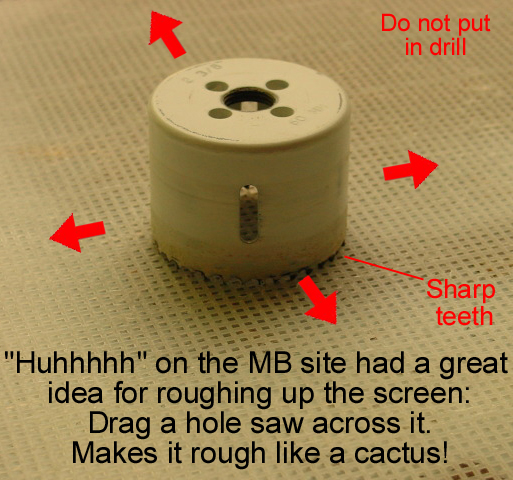Quick guideline:
0.5 actual (not equivalent) fluorescent watts per gallon MINIMUM.
1.0 actual (not equivalent) fluorescent watts per gallon for HIGH filtering.
1.0 square inches of screen per gallon, with bulbs on BOTH sides. (10 x 10 = 100 square inches = 100 gal)
2.0 square inches of screen per gallon, if ONE sided.
18 hours of lights ON, and 6 hours of lights OFF, each day.
Flow is 24 hours, and is 35 gph per inch of width of screen, EVEN IF one sided.
Very rough screen made of roughed-up-like-a-cactus plastic canvas.
Clean algae off of screen every SEVEN (7) days NO MATTER WHAT.
Your screen width, however, is limited by the gph of your overflow:
Screen Width
[hr]
Gallons Per Hour (GPH)
1" 35
2" 70
3" 105
4" 140
5" 175
6" 210
7" 245
8" 280
9" 315
10" 350
11" 385
12" 420
13" 455
14" 490
15" 525
16" 560
17" 595
18" 630
19" 665
20" 700
The maximum flow you'll get to the screen will be what's going through your overflow now. This is easy to figure out by counting how many seconds it takes your overflow to fill a one-gallon jug:
60 seconds = 60 gph
30 seconds = 120 gph
15 seconds = 240 gph
10 seconds = 360 gph
8 seconds = 450 gph
5 seconds = 720 gph
Take this gph number that you end up with, and divide by 35, to get the number of inches wide the screen should be. For example, if your overflow was 240 gph, then divide this by 35 to get 6.8 (or just say 7) inches. So your screen should be 7 inches wide.
How tall should the screen it be? That is determined by how much screen area you need, which is determined by how many gallons you have. Try to get one square inch of screen (lit both sides) for every gallon. If lit on only one side, double the screen area.
Most likely, you will need/use all your overflow, and you won't need to split it. The wider the screen, the better, because it flows more and therefore filters more per hour.
Bulbs should be 3000K or near.
Plastic canvas can be found in any craft/knitting store, and online. Rough it up like this:



